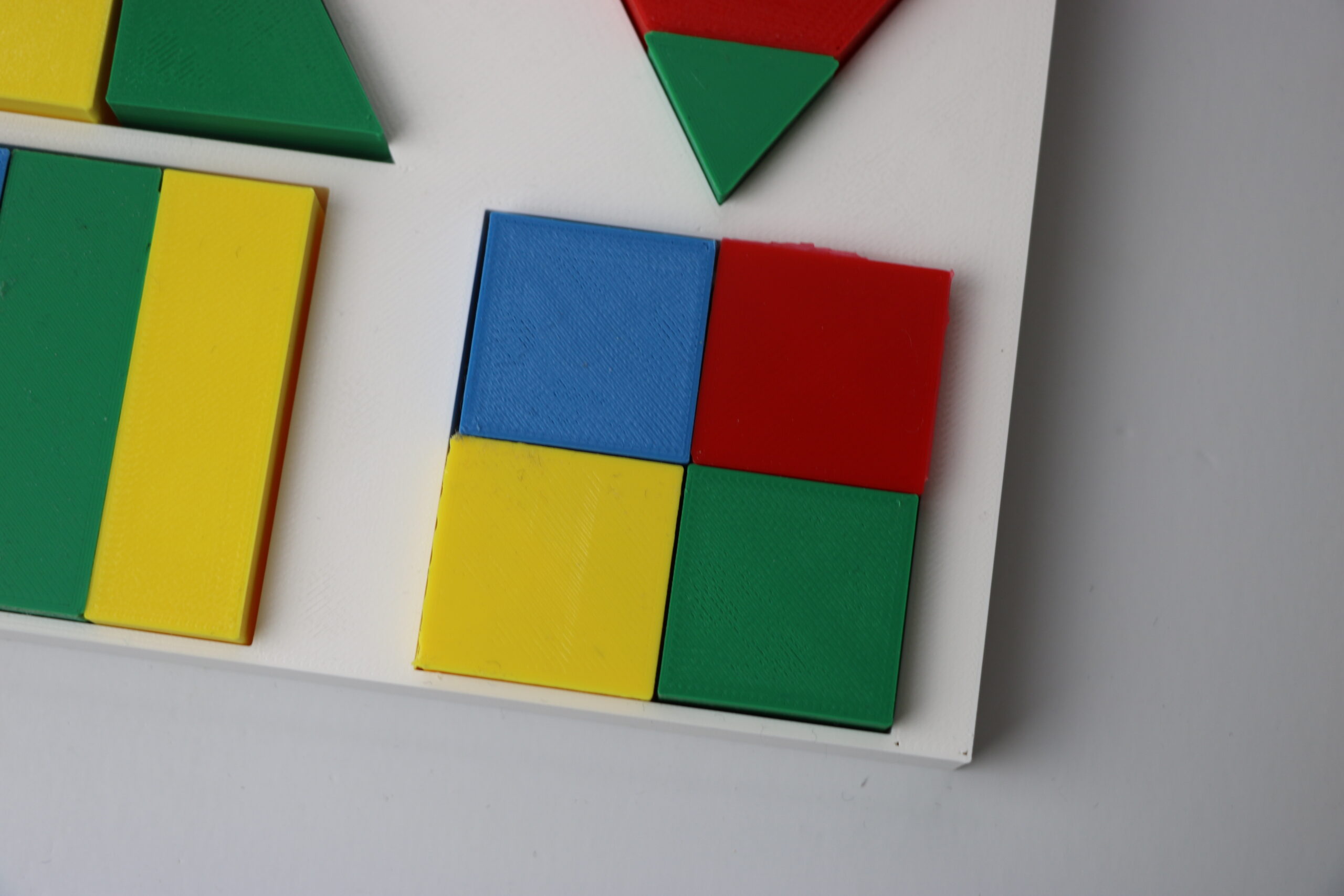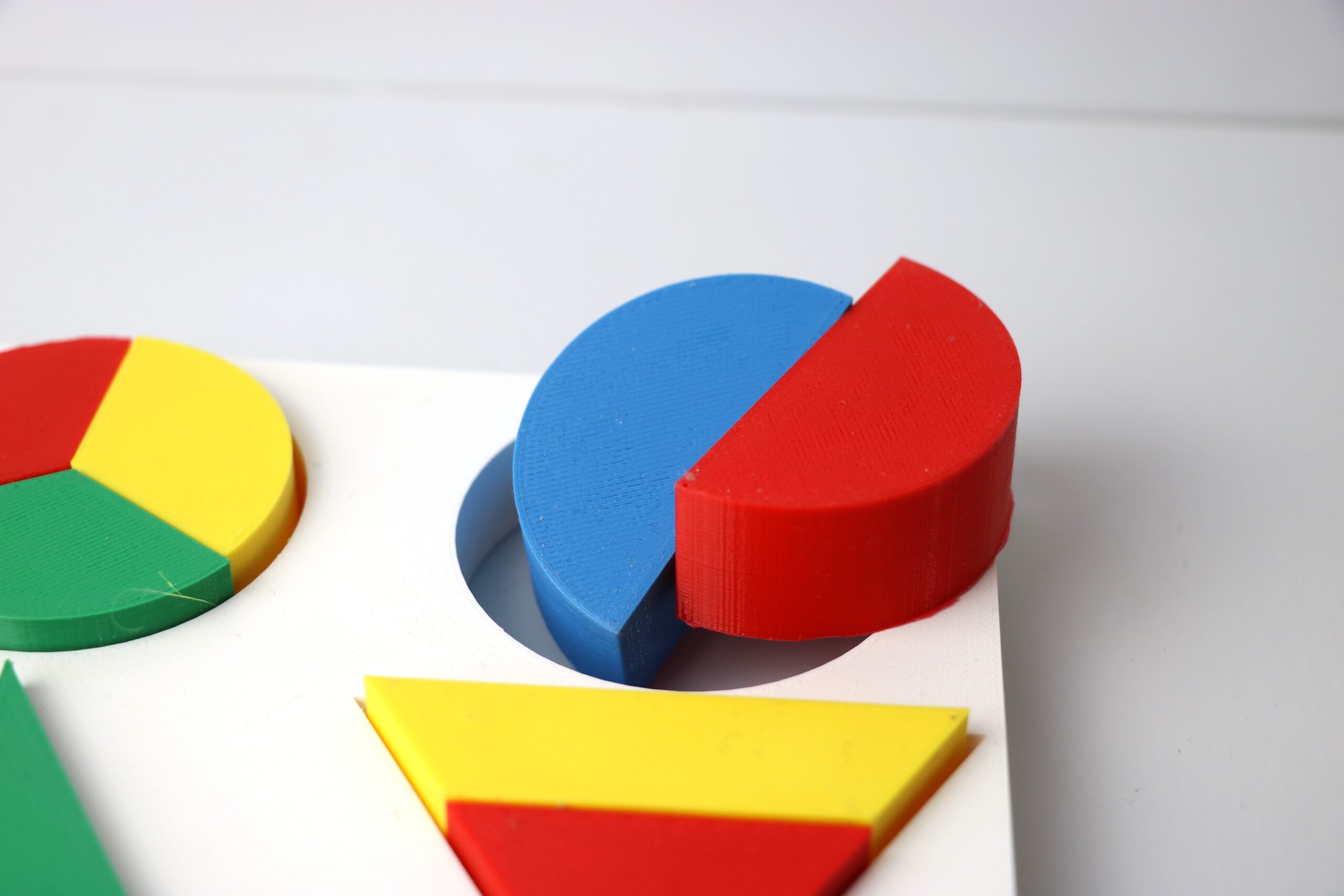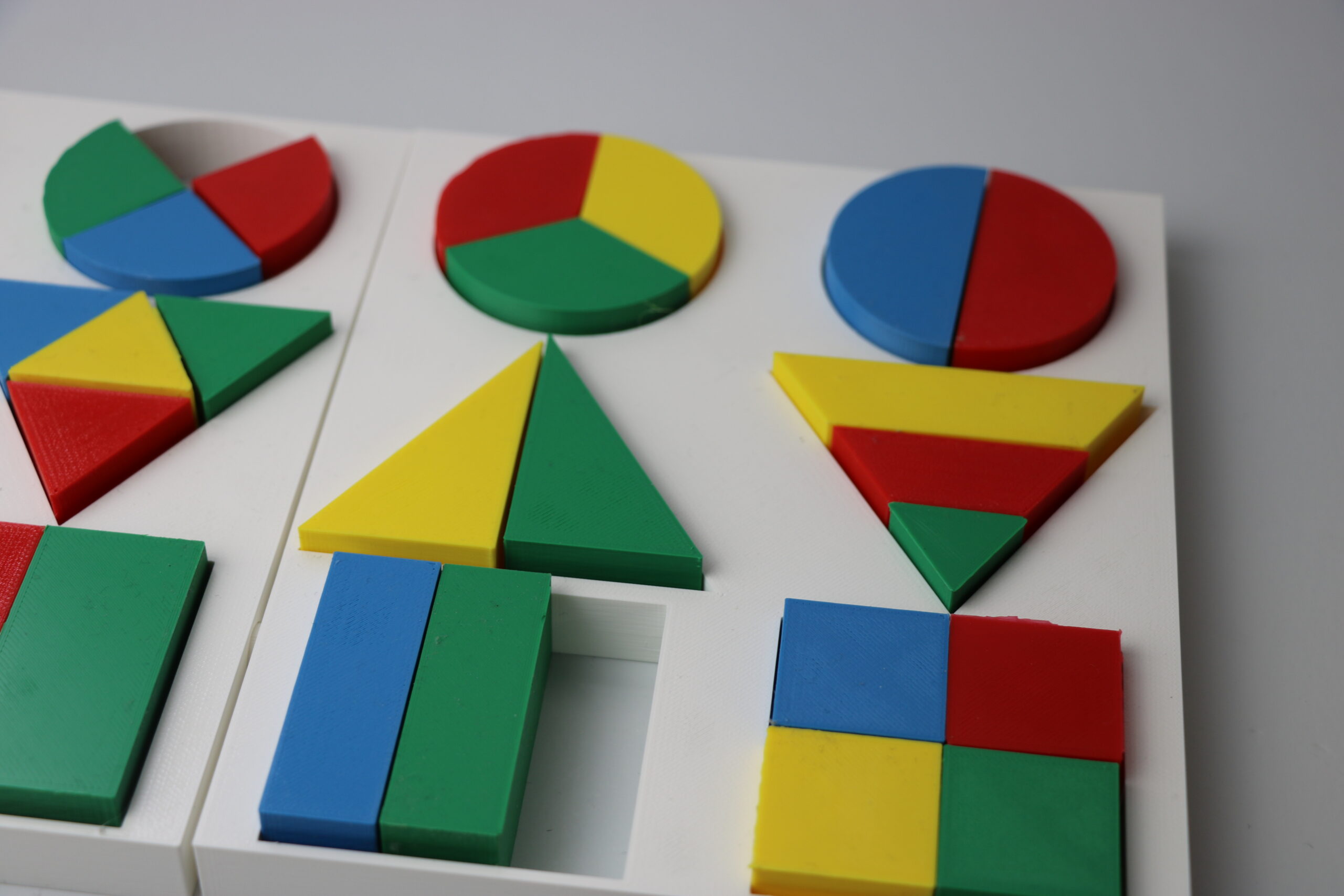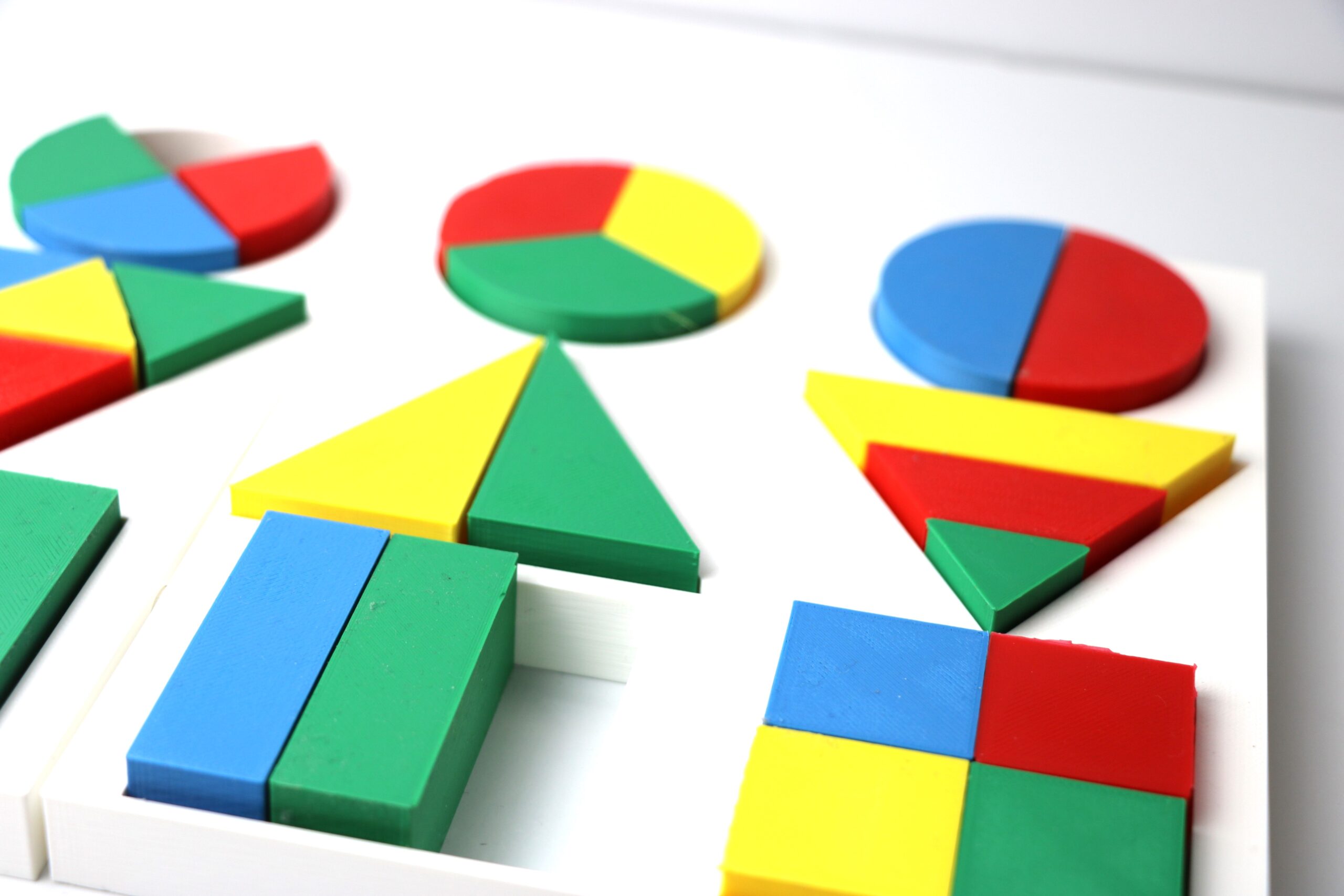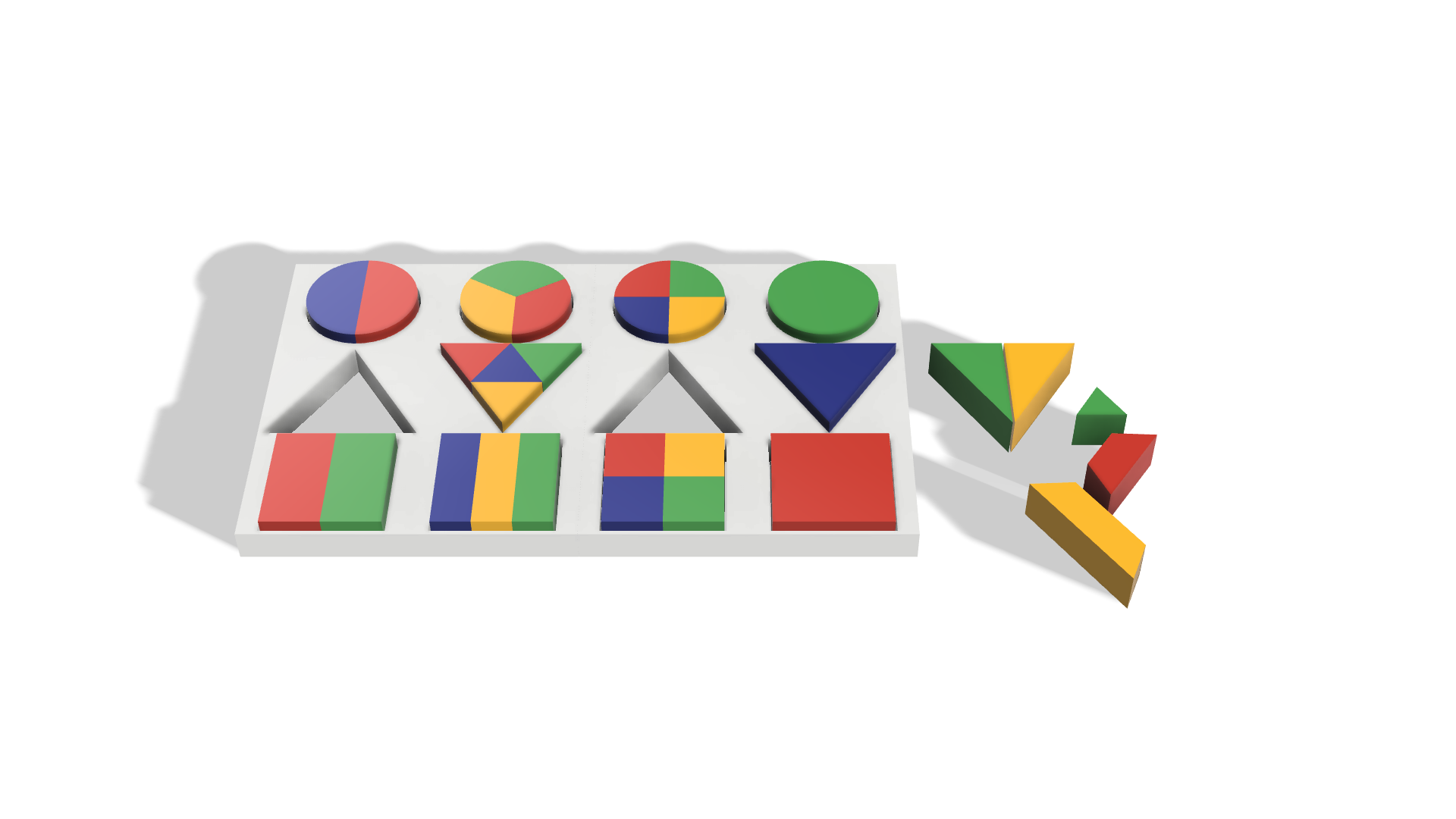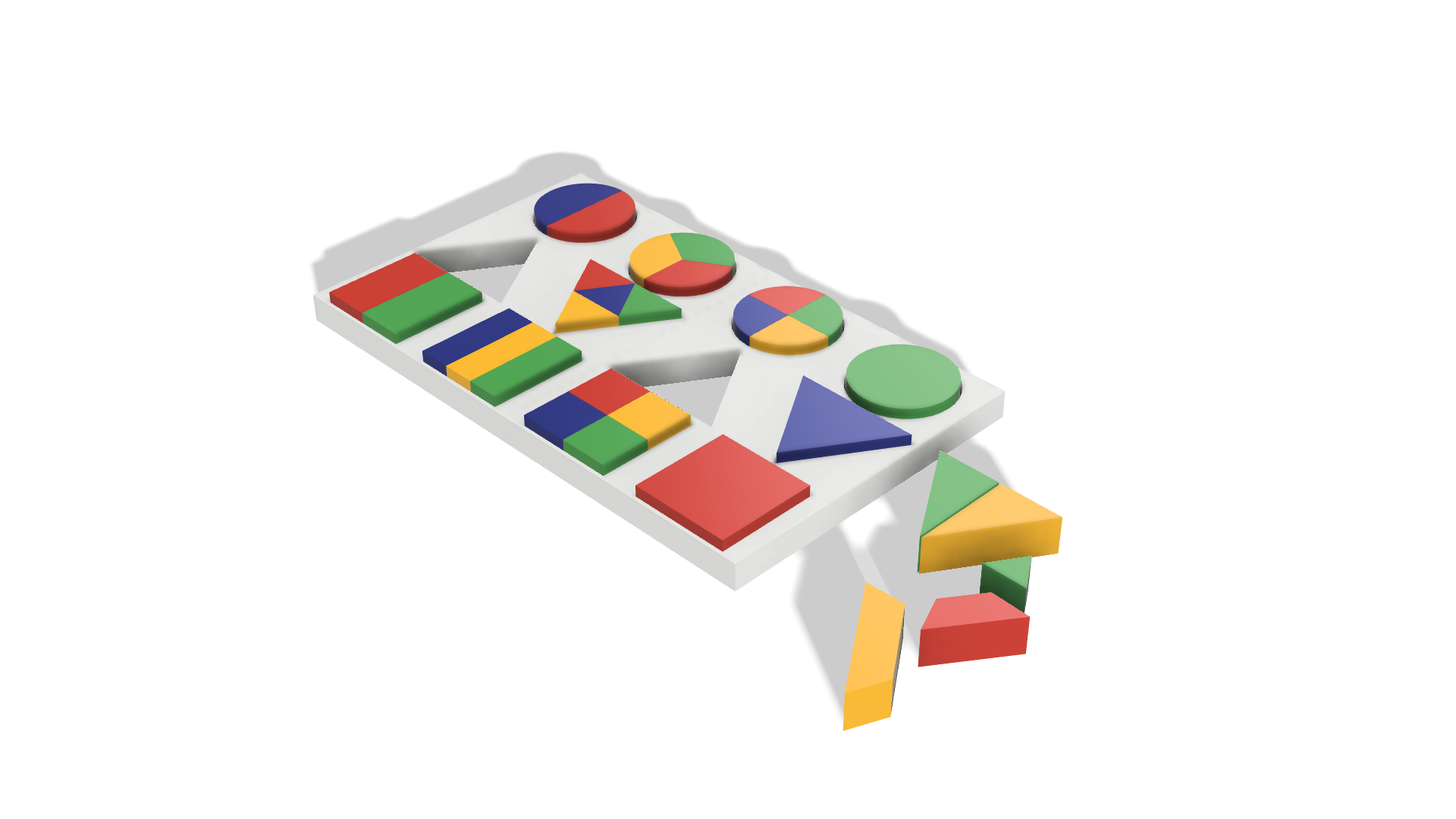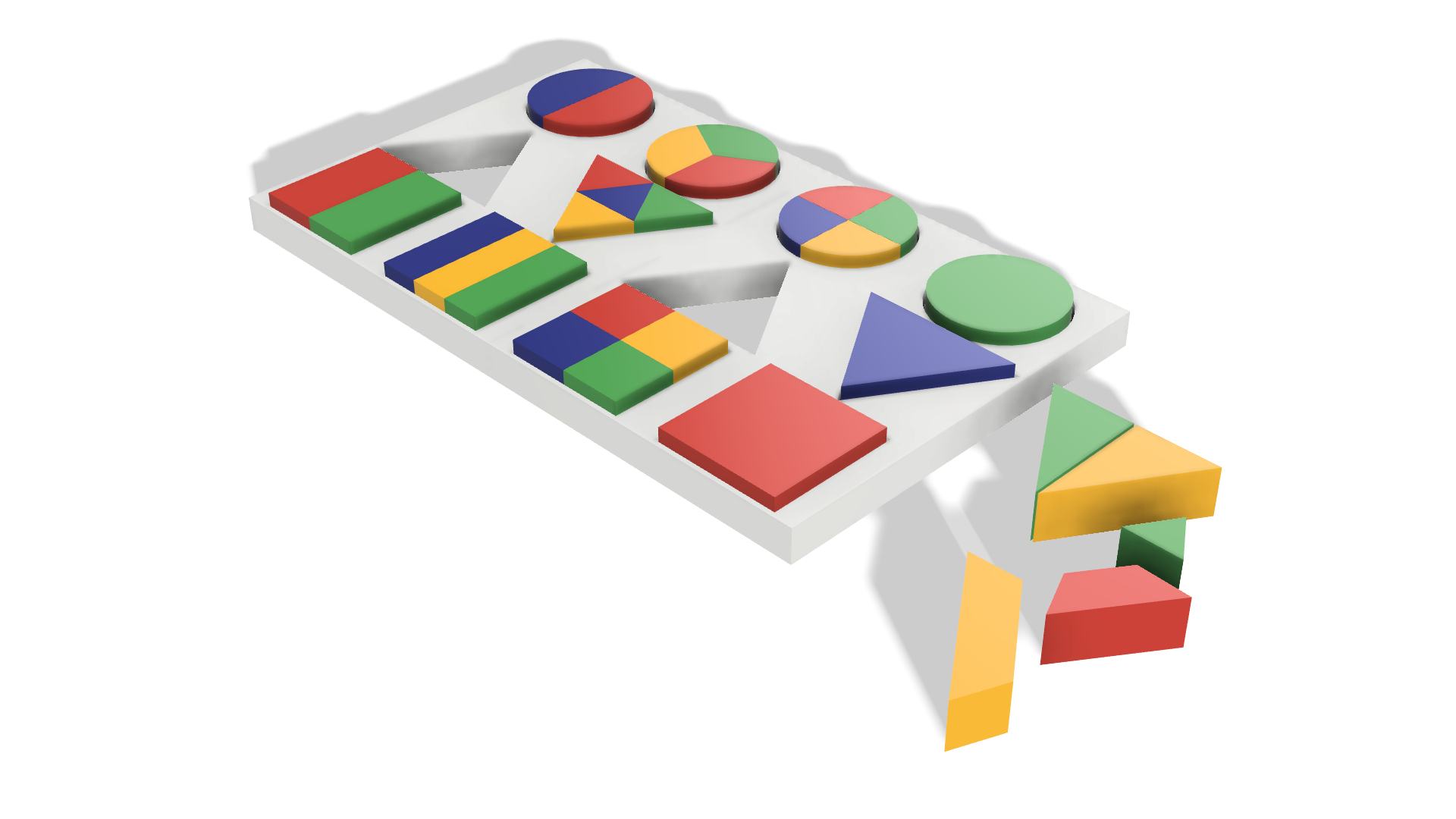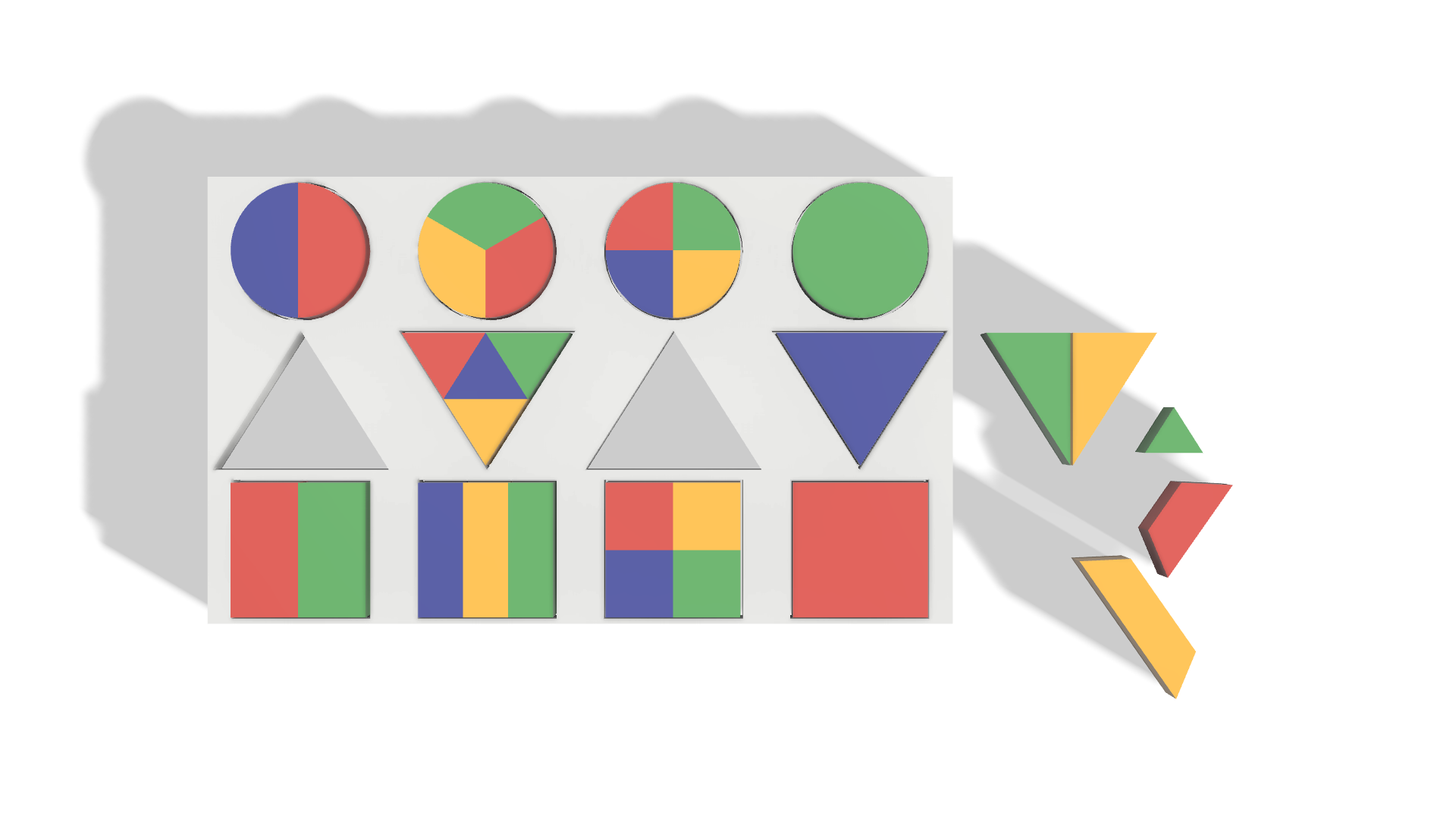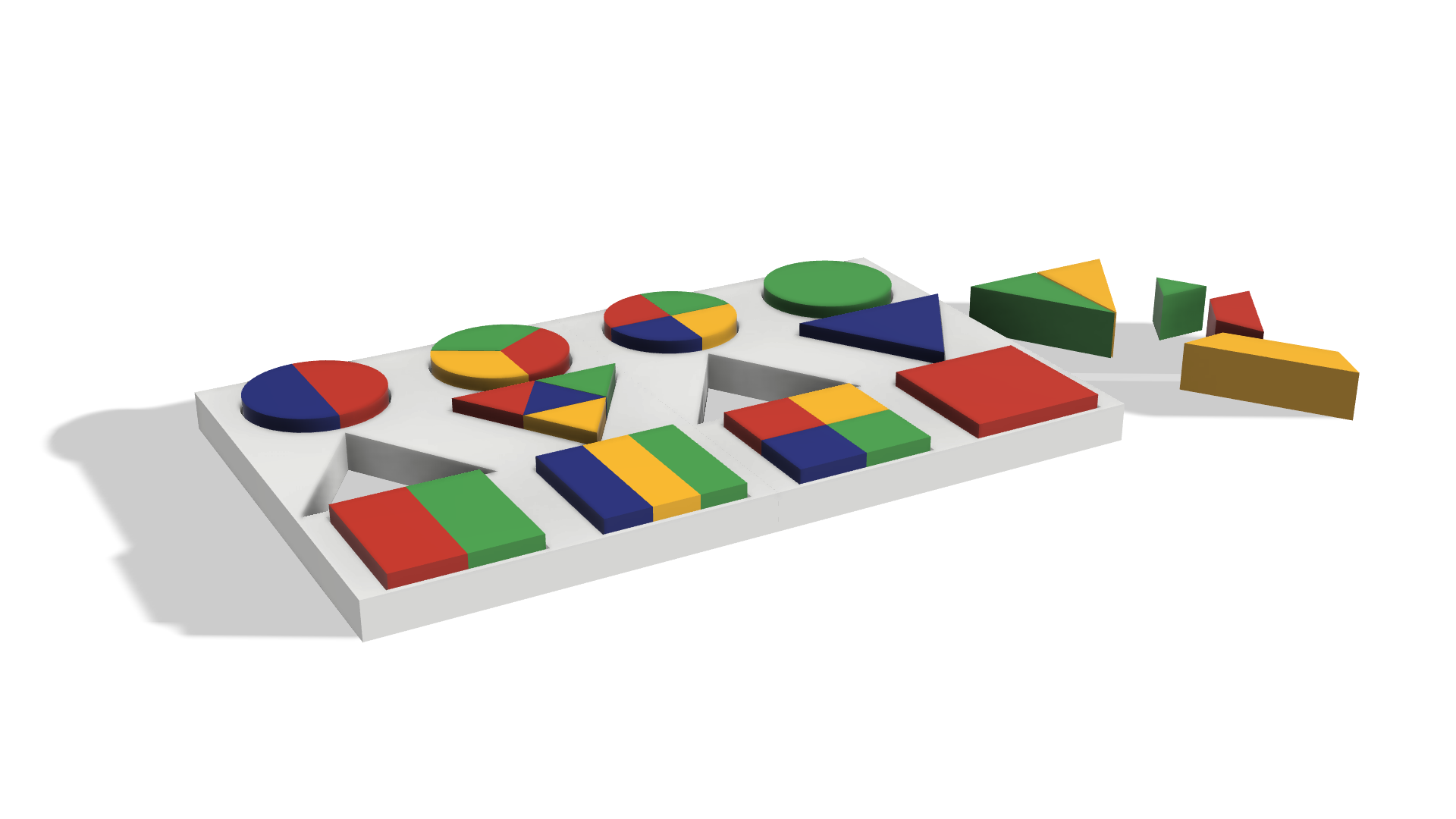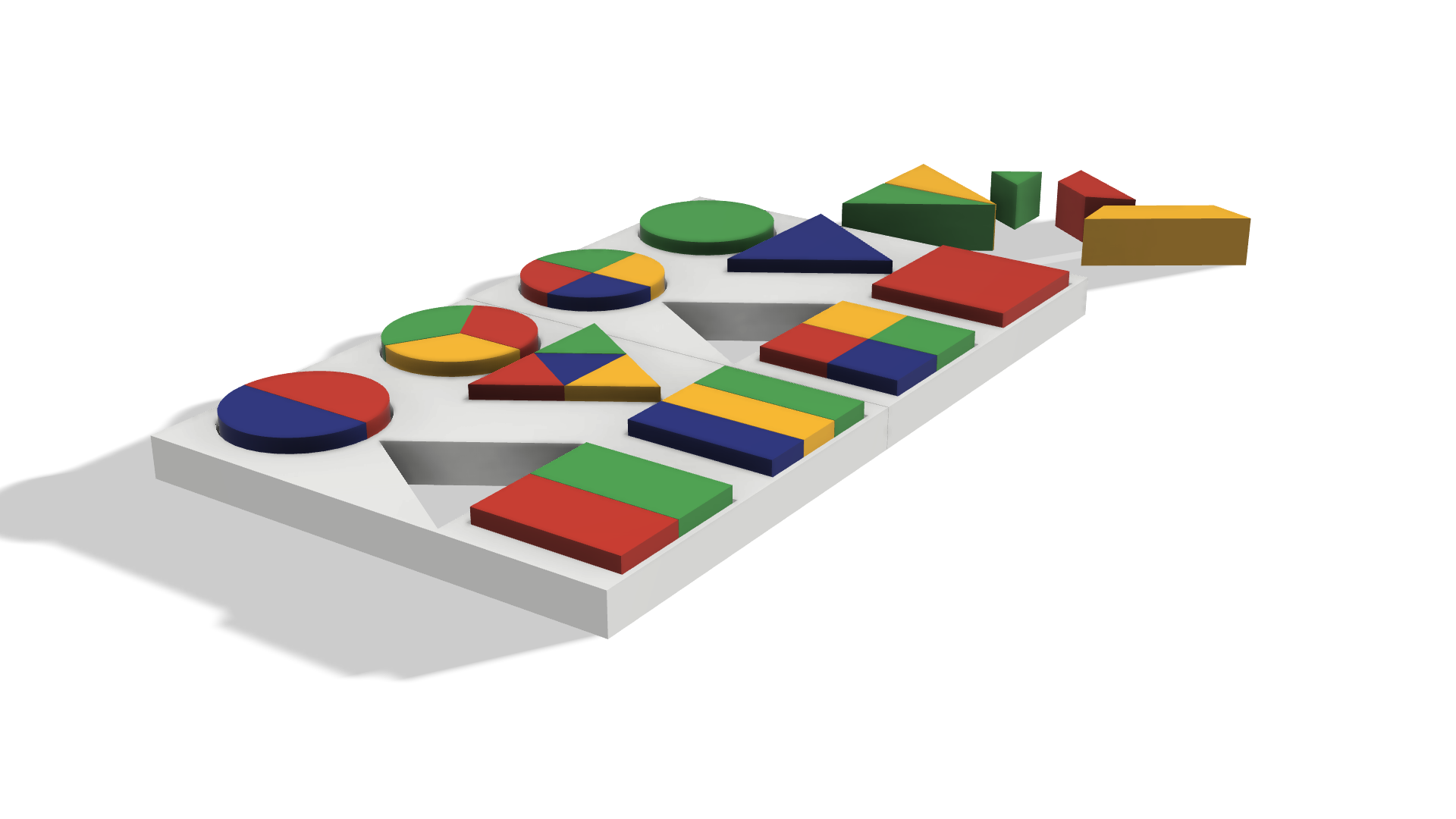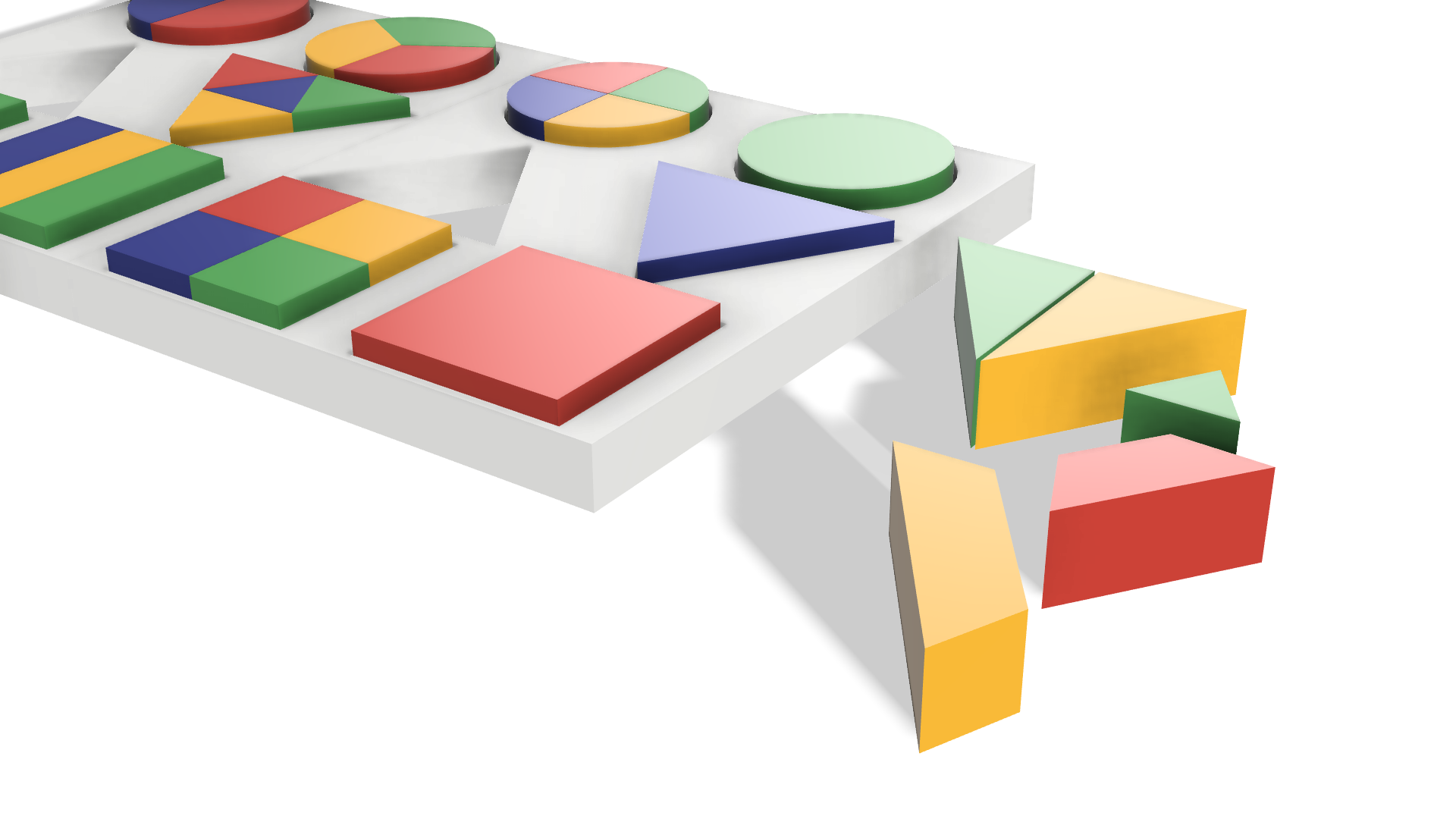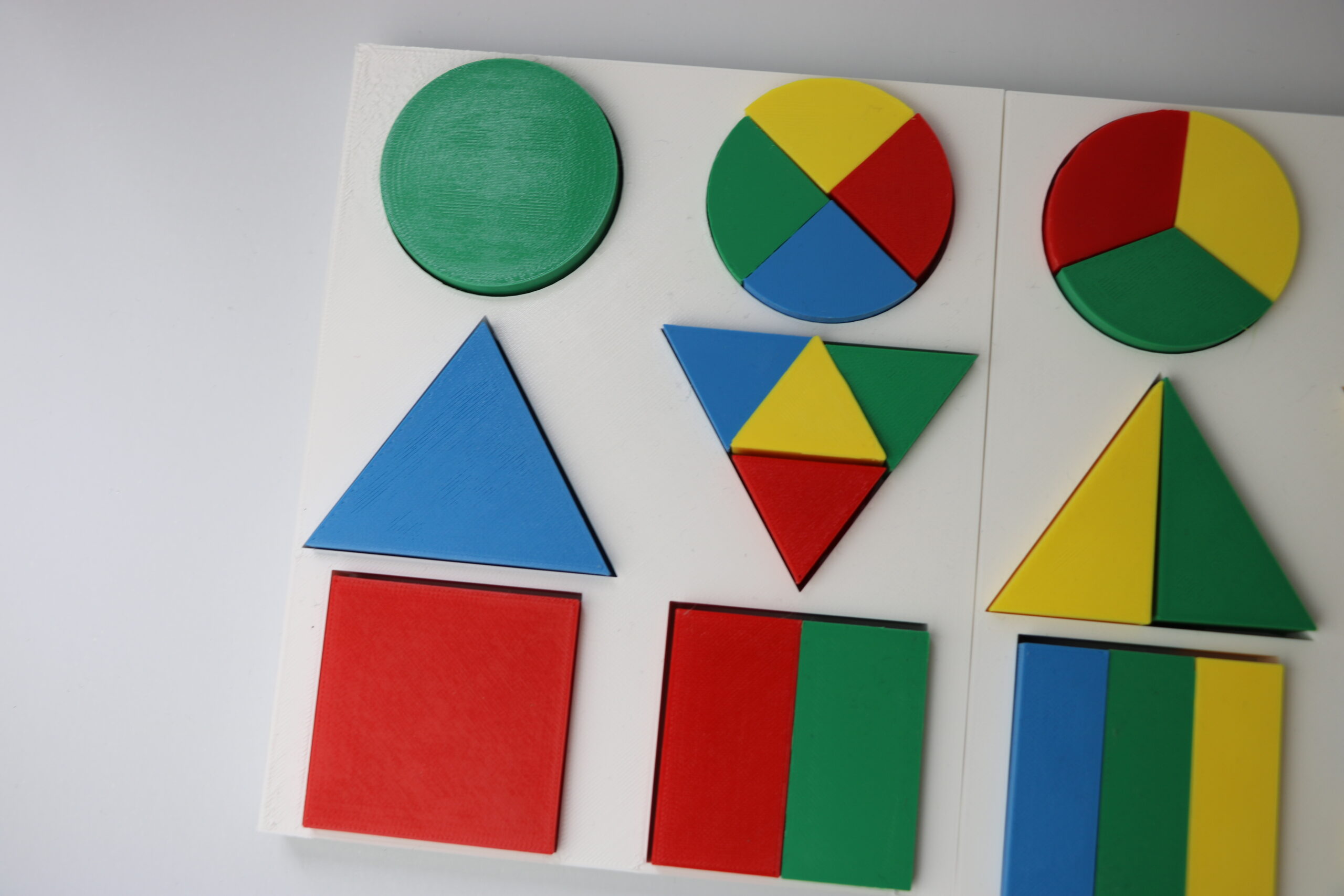
About
Exercise name:
Matching puzzle
Which cognitive area is it related to?
Abstract thinking
Description of the exercise:
Use your geometric and engineering skills to solve the puzzle by putting the correct pieces together into the board. The exercise is suitable for people with early or mild stages of dementia.
Who is the game for – The game is suitable for professionals in a day center and residential service, as well as for a family caring for a loved one with dementia. It is suitable for people with mild to moderate dementia.
Necessary materials – pre-made colored parts of geometric figures and the game board, which can be used to put the parts together into the board.
Preliminary preparation – For each participant there should be a separate set with which to have fun.
Participants – This game is individual but can be played in groups of up to 3 participants. The moderator or caregiver only explains the rules and helps if necessary.
Location – Choose a quiet place where the person with dementia and the person around you feel comfortable, e.g., around a dining table or coffee table where materials can be spread. There must be enough light. Make sure the person with dementia has taken glasses or other aids such as a hearing aid so that you can communicate.
Presentation – explain what you will do together, in a calm and fun way.
Make sure the person with dementia understands the idea and what to create. Allow enough time for the geometrical parts to be examined. If necessary, discuss which piece can be used for what.
Finally, express congratulations on the well-done job.
How can this model be used at home and in residential care/nursing homes?
Dementia affects a person’s cognitive functions, self-identity, memory and concentration. It develops gradually and leads to a change of personality. People with dementia have a problem with memory, which leads to recall difficulties and problems with speech, coordination, abstract thinking, concentration, planning, orientation with regard to place and time, frequent mood swings.
This model can be provided to patients in residential care or nursing homes as well as in their own homes as the model is not big or heavy and is easy to transport. This exercise can help patients improve the skills of:
- Thinking
- Concentration
- Planning
- Problem solving
- Visual processing and perception
What benefits can be obtained with its use?
The exercise can provide several benefits:
- Train critical thinking, concentration, attention and focus
- Support and improve planning skills
- Help improve problem solving abilities
- Train processing and perception skills
Technical specification of the model
Technology:
Material:
Colour (One piece one colour):
White, red, blue, green, yellow
Suitable dimensions for its use in the classroom (MM):
The board: 400 mm x 252 mm x 15 mm
Circle parts:
Green circle: d = 60 mm, H = 15mm
Blue and red halves of a circle: r = 30 mm, H = 15 mm
Yellow, green and red thirds of a circle: r = 30 mm, H = 15 mm
Yellow, green, blue and red 1/4 of a circle: r = 30 mm, H = 15 mm
Triangle parts:
Blue triangle: 60 mm x 60 mm x 15 mm
Yellow and green halves of a triangle: 30 mm x 60 mm x 15 mm
Green, red and yellow triangle parts: green – 20 mm x 20 mm x 15 mm, red – 20 mm x 20 mm x 40 mm x 15 mm, yellow – 40 mm x 20 mm x 60 mm x 15 mm
Red, blue, green and yellow small triangles: 30 mm x 30 mm x 15 mm
Square parts:
Red square: 60 mm x 60 mm x 15 mm
Red and green squares: 30 mm x 60 mm x 15 mm
Blue, yellow and green squares: 20 mm x 60 mm x 15 mm
Red, blue, green and yellow squares: 30 mm x 30 mm x 15 mm
Should the piece be resistant or be subjected to stress?
Yes
Should it be printed during meeting with person with dementia, before or after?
Before
Do you have to paint the model?
No
Number of pieces of which the model is composed:
In total: 31
- The board: 1
- Circle parts: 10
- Triangle parts: 10
- Square parts: 10
Ensemble type if necessary (slot, clip, screwed ...)
No
Accuracy and definition required. (Quality) Low, mid or High.
Mid
Images
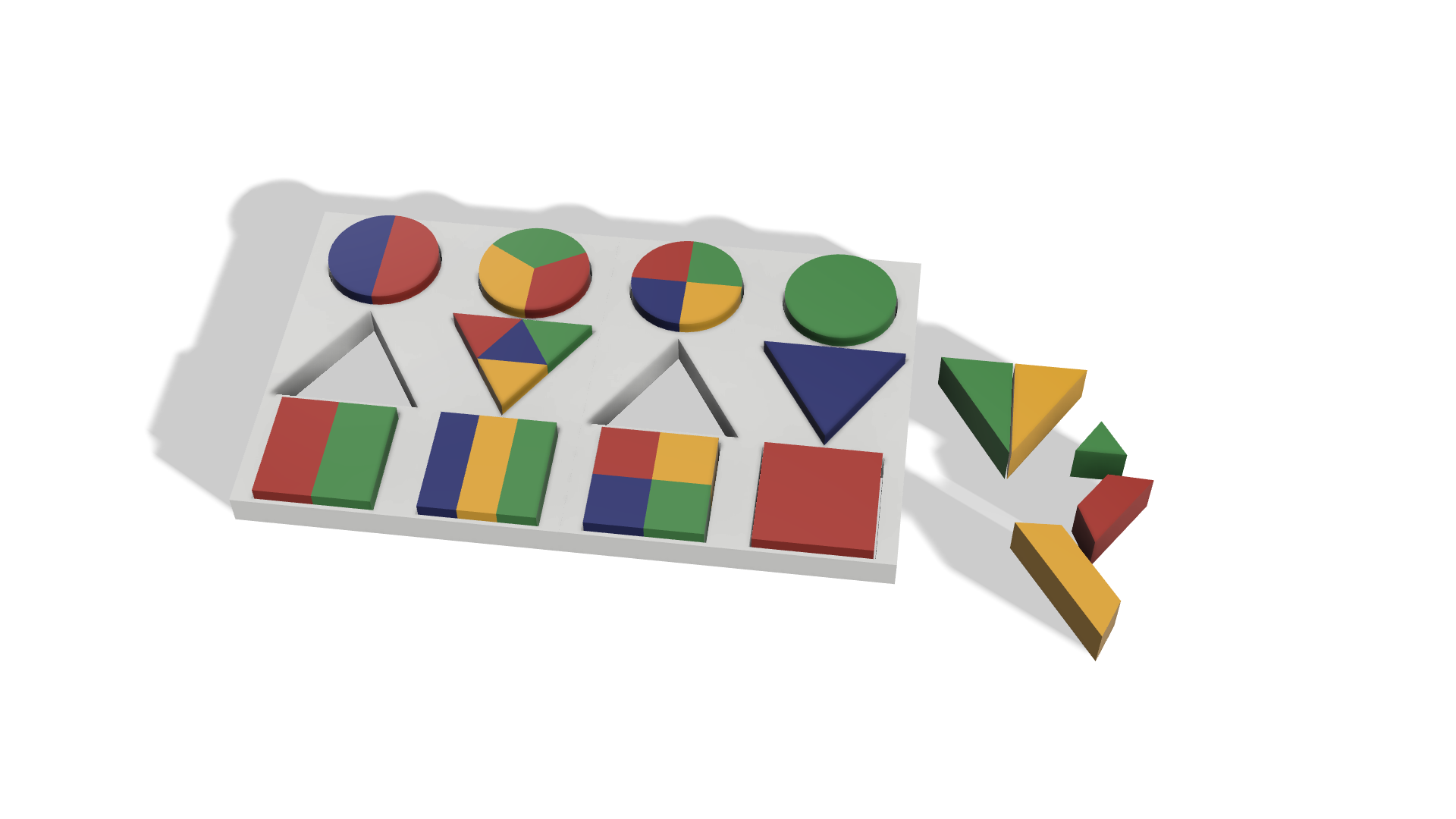
STL files viewer
Good luck!

